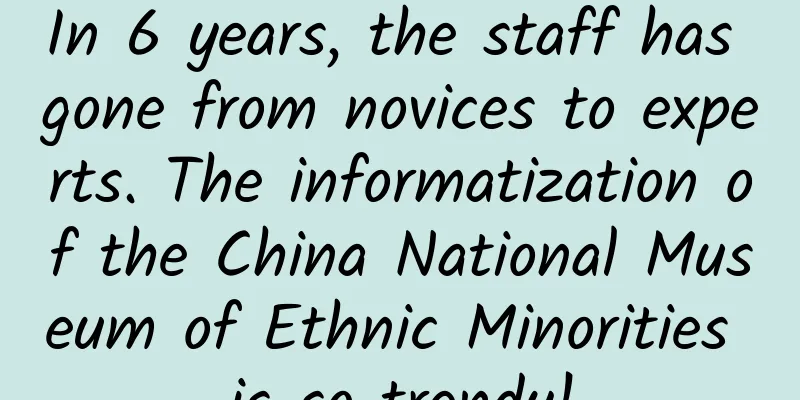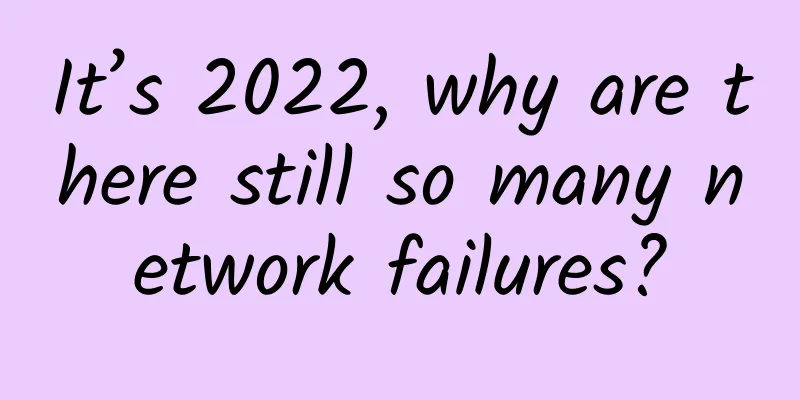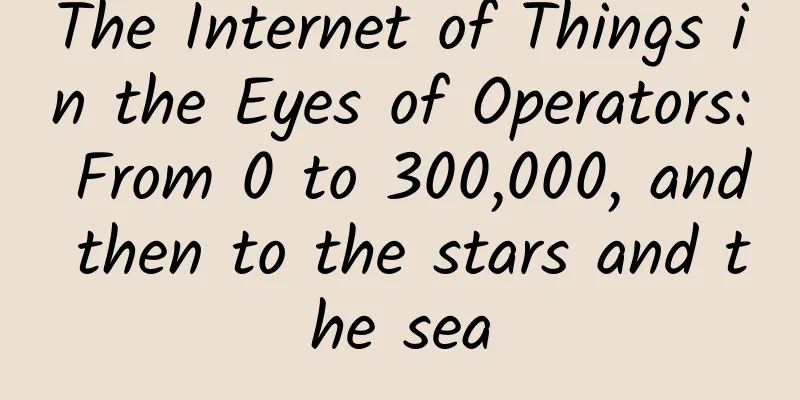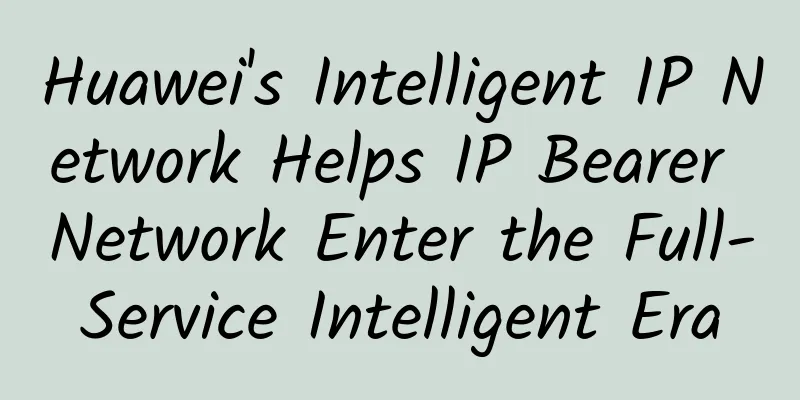In 6 years, the staff has gone from novices to experts. The informatization of the China National Museum of Ethnic Minorities is so trendy!

|
[51CTO.com original article] Whenever people mention museums, what comes to mind may be spacious and quiet spaces, precious and ancient collections, and gentle and slow explanations... This is the unique charm of museums, but it is not all that people see in museums. In fact, museums not only need to display those ancient treasures, but also need to use information technology to classify and preserve those precious artistic heritages with historical significance and scientific value.
When it comes to using information technology to build museums, people who are knowledgeable may know a lot: wireless Internet technology can be used to track and locate the status of collections; VPN technology can be used to ensure that researchers who collect materials in remote areas can send back first-hand information as soon as possible; server virtualization technology can be used to quickly retrieve massive amounts of information from collection databases; security solutions can be used to ensure that the museum's information database is as solid as a rock, making countless criminals salivate but unable to obtain it... The above is all true, but everyone may have overlooked a very contradictory reality: some of the real users of these information technologies are senior researchers with gray hair who can only use a magnifying glass to check paper materials and are not familiar with computer keyboards; some are full-time staff who can only use financial systems and know nothing about Internet applications; some are completely defenseless against Internet security threats and have no security awareness at all... What the reporter wants to know is, when these researchers, who are very good at their own professional fields but "extremely unfamiliar" with informatization, encounter high-tech informatization methods, what kind of sparks will be created? By extension, in a very traditional and conservative industry, how should the person in charge of the information department promote informatization construction and let people who once knew nothing about information technology sincerely accept new things? And how can they combine emerging technologies with business so that every employee can feel the value of informatization? With this series of questions in mind, 51CTO reporter interviewed Yu You, chief engineer of the Information Center of the China National Museum of Ethnic Minorities. Yu You is not only a witness to the museum's informatization construction, but also a participant. In his story, there are many wonderful stories of the continuous impact and integration of new technologies and old applications in museums. After the interview, the reporter found that the problems that the Information Center of the China National Museum of Ethnic Minorities had faced are actually happening to customers in other industries to a greater or lesser extent. Through Yu You's experience sharing, it can not only serve as a reference for the informatization construction of other museums, but also for the informatization departments that are still in relatively conservative industries. The information construction started late? But it is moving fast! Like most museums, the China National Museum of Ethnic Minorities started its informatization construction very late. Before 2011, the China National Museum of Ethnic Minorities had almost no information construction, with only a few mainframes for office use, and the network was managed by the property management. In 2011, the China National Museum of Ethnic Minorities purchased servers for the first time and rented an IDC computer room in order to build its official website. By 2014, the information construction of the China National Museum of Ethnic Minorities entered a period of rapid development. In addition to purchasing a large number of servers to build its own computer room, it also established a collection management system, a CNKI system, and a reading management system. Because a large amount of data is stored on the server, it also purchased the first firewall and paid more attention to information security. In the past three years, the information construction of the China National Museum of Ethnic Minorities has been gradually improved, and a new audio-visual management system has been added. Since a large number of wireless connections have been installed, a wireless Internet behavior management system has also been specially deployed. At the same time, because the collection management business system needs to be remotely connected to the office network, the Information Center has purchased VPN series products. In 2016, because a large number of servers and businesses were difficult to match with each other and management was also very complicated, a hyper-convergence solution was deployed, which greatly saved management costs. In Yu You's opinion, in modern museums, the management, research, restoration and digital display of cultural relics increasingly rely on the support of information technology. He divides the information construction of museums into three levels: First, the business level ensures the safe, stable and efficient operation of important systems; Secondly, the office level should provide a smooth, convenient and safe Internet environment; Finally, an advanced and open cultural display platform should be built at the social service level. We have come this far step by step, and looking back we have discovered that the China National Museum of Ethnic Minorities has become the "leader in the museum industry" and its information construction has become increasingly smooth. Shhh, museum safety is also a big issue! "With so many valuable collections, doesn't it cost a lot to build up the museum's information security?" This was what the reporter joked with Yu You, but unexpectedly he actually hit Yu You's pain point. Unlike what most people understand, those precious collections do not specifically refer to physical collections, but also include digital collections such as photos, videos, and audio. Yu You gave an example: more than a hundred years ago, two human scientists from Cambridge University in the UK came to Northeast China, investigated the living conditions of ethnic minorities in the fields at that time, and shot a large number of films. Today, those ethnic minorities have disappeared without a trace, and the films shot by these two anthropologists have become the only evidence of their survival. "For museums, such films are more valuable than the same weight of gold, and their storage naturally needs to be particularly safe."
"Our main needs for information security are application security, data security, transmission security, Internet security, and identity security," said Yu You. "Museums often do not have staff with extensive security knowledge, so from the museum's perspective, it is better to say that they are purchasing a comprehensive, streamlined, efficient and timely security service rather than purchasing a security product." Yu You said this for a reason. In 2014, the China National Museum of Ethnic Minorities suffered an intranet security crisis. Initially, when the information center was migrating ERP to virtualization, a large number of computers were infected with Trojans in a short period of time, launching a large number of DDos attacks. As a result, it was found that many office computers had been infected for a long time. It is no exaggeration to say that one computer was infected with more than 7,000 viruses. The severity of the security situation can be imagined. What made the information center feel headache was that the office staff at that time had almost no security awareness and did not care about Trojans at all. Some office computers had never been patched. Even if the employees were working on the intranet, there was no unified security precautions. Later, the information center realized that this must be started from two aspects. First, it started with the product. Just having a firewall was not enough, so another firewall was added to isolate the user and the server; second, it started with the employees, formulating the operating specifications for the office staff and strengthening the security awareness. In 2015, Yu You found that the business system in the intranet was very slow to open online. He checked the background and found that the CPU was running at almost full capacity. He checked with the firewall and found that more than a dozen computers were infected with Trojan viruses and kept attacking the switches. Fortunately, the information center deployed an Internet behavior management product. They found the IP address of the attack through the records, and then found the specific device through the corresponding IP address, and finally resolved the attack without any danger. From then on, Yu You realized the importance of security services. Since the information center has limited staff and everyone has their own responsibilities, it is impossible to have dedicated operation and maintenance personnel to monitor the museum's information network throughout the day. Therefore, the best way to solve the problem is to let the security company provide fast-response security services, and also to strengthen security awareness from within. "It's not just the intranet, the extranet is equally serious. The official website of the China National Museum of Ethnic Minorities is constantly attacked every day. Although security solutions have been deployed, it is really hard to relax when I open the logs every day and see the dense frequency of attacks." Yu You sighed. As a user with a strong demand for information security, Yu You has his own views on security products. He believes that the future of security is all about service, and hopes that the firewall can be optimized for customer-specific security mechanisms in the future. He told reporters that the museum attaches great importance to security and hopes that there will be a top-level design for security planning at the beginning of network planning and system development, rather than waiting until the hardware and software equipment are in place before considering security, as most customers do now, and let the security company join in as a supplementary role at the end. Super easy-to-use hyper-convergence Before the interview, the reporter had not expected that the hyper-converged architecture, which has been commonly seen in the news recently, would be deployed so low-key in the system of the China National Museum, and would actually become the museum's "favorite", attracting Yu You's praise. It’s a long story. At that time, the Information Center of the National Museum of Ethnic Minorities installed a disk array, but because the initial technical path was not clear, the NaaS system, business data, and collection number data on the server could not be shared with each other. At that time, the Information Center had few options: if it purchased another disk array and stored the previously unshared data in the same disk array, although it could solve the existing problem, it was obviously a high price because disk arrays were expensive. At this time, Yu You came across the concept of hyper-convergence. He found that through storage virtualization and server virtualization, all servers could access the data on the disk array. So the information center decisively launched hyper-convergence and immediately solved the problem. Unexpectedly, the benefits of hyper-convergence are yet to come. After server virtualization, the information center only needs to make a unified system template. If any department wants to develop a system, the information center only needs to clarify how much memory and CPU the system needs, how much hard disk space it needs, what operating system it needs, and what type of database it needs, and then configure resources according to requirements, click OK, and send the IP address, administrator's username and password to the department. Yu You told reporters that the hyper-convergence platform provides unified management and scheduling of business systems, reducing the workload of operation and maintenance. The current system of the China National Museum of Ethnic Minorities can view the resource usage of each business system in real time. If it is found that the usage rate of a business system is relatively high, the CPU, memory, and network traffic will be adjusted accordingly to achieve the most optimized application of resources. In addition, since each business system is separated and does not affect each other, it is very easy to hold someone accountable if a problem occurs. The information-based future of museums: flexible, efficient, secure, and proactive Perhaps because the shadow of more than 7,000 viruses was too heavy, Yu You heavily listed "desktop virtualization" in his future informationization planning. This is something that the reporter can understand very well. Due to the limited manpower of the information center, even if viruses are found on the computers of many museum employees, there is no way to check and kill them one by one. However, the deployment of desktop virtualization is different. All applications are installed on the server. As long as a one-time antivirus is performed at the bottom of the server, all employees' computers will be cleaned up. Most importantly, the speed is very fast and it only takes 1 minute to reinstall the system. This approach is very suitable for traditional industries such as museums, because employees have different levels of acceptance of information technology, different security awareness, and different levels of business applications. Through desktop virtualization, the information center can uniformly allocate and manage in the background, which not only eliminates safety hazards, but also reduces the workload of information center staff, achieving the best of both worlds. Of course, Yu You also knew that this would be a huge test for the network. First of all, the network must ensure high speed and stability, so it is necessary to build dual links for network equipment and storage to ensure that the failure of any device will not affect the security and normal use of the business system. In addition, the China National Museum of Ethnic Minorities also has a need for graded protection, which requires determining the direction of data flow in the business system and whether the data is secure. "Current security is mainly reflected in protection after being attacked, but we want to be more proactive, so that we can make timely judgments and respond to attacks once they occur." Just as Yu You said, a good museum will allow visitors to be subtly introduced into the long river of history, and have endless aftertastes in the scenes of savoring historical traces. In fact, what the reporter wants to agree with is that a good information system, although invisible, will allow the collections to continuously release their value in the process of collection, research, display and preservation, allowing the researchers and staff of the museum to devote more energy to those work that contributes to mankind. This is the charm of IT, and it is also the value and responsibility of informationization. [51CTO original article, please indicate the original author and source as 51CTO.com when reprinting on partner sites] |
<<: 4G is a knife, and 5G is a Swiss Army knife?
>>: Will 5G replace WiFi? Not in the short term
Recommend
A dream combination: IoT and edge computing
The proliferation of Internet of Things (IoT) dev...
Hot Topic | Why is the United States determined to "kill" Huawei?
"After reading the 20,000-word interview wit...
Application of load balancing technology in computing power network
Part 01, ECMP ECMP is a hop-by-hop, flow-based lo...
China Mobile added 16.65 million 5G package users in May, totaling 222 million
[[406533]] China Mobile recently announced its op...
5G and IoT: The mobile broadband future of IoT
5G is the fifth generation of mobile, cellular te...
Don't let MAC address drift become your nightmare: practical protection and detection methods
Overview of MAC Address Flapping MAC address drif...
Five-minute technical talk | HTTP evolution history
Part 01 Protocol Introduction HTTP is the most po...
BuyVM Las Vegas VPS simple test
BuyVM has been shared many times in the blog. It ...
Ericsson signs 5G SA agreement with Spanish telecom operator Masmovil
According to foreign media reports, Swedish suppl...
Elisa's 5G network now covers half of Finland's population
Finnish operator Elisa said its 5G network has be...
10g.biz Los Angeles CN2 VPS simple test
Yesterday we tested the 10g.biz Hong Kong VPS, to...
Wi-Fi 6 is not yet popular, so why has the latecomer Wi-Fi 7 become a battlefield for giants?
When it comes to Wi-Fi, everyone is familiar with...
Do you really understand the network process of IoT terminal devices connecting to the IoT platform?
Nowadays, we use a large number of IoT devices in...
Empowering IDC infrastructure, can 5G achieve data transmission at the speed of light?
The fifth generation of cellular networks is gett...
What is missing from licensing 5G for commercial use?
On February 20, South Korea announced the officia...









